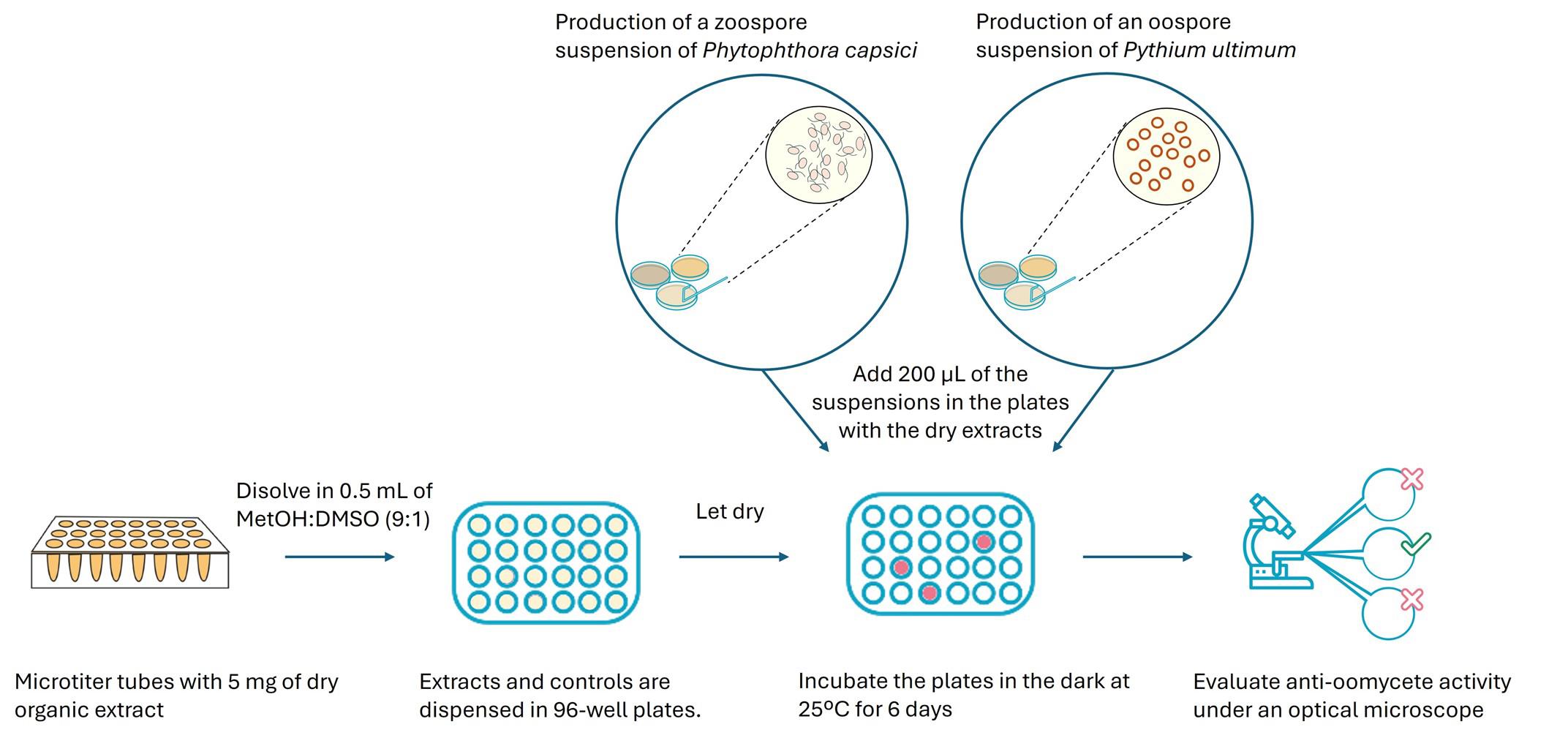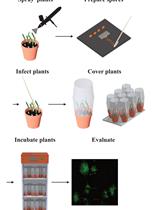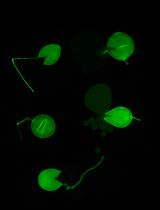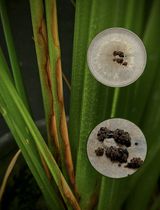- EN - English
- CN - 中文
In Vitro Screening of Microbial Extracts Against the Oomycetes Phytophthora capsici and Pythium ultimum
微生物提取物对卵菌辣椒疫霉菌和猝倒病疫霉的体外筛选
发布: 2025年09月20日第15卷第18期 DOI: 10.21769/BioProtoc.5451 浏览次数: 1207
评审: Shweta PanchalAnonymous reviewer(s)
Abstract
Oomycetes are a predominantly plant-pathogenic group of organisms often considered and managed as fungi; however, due to their evolutionary divergence from true fungi, many conventional fungicides are ineffective against them. Their unique physiological characteristics make them challenging to work with, highlighting the need for a standardized and reproducible procedure for anti-oomycete assays. Previous studies describe methods to obtain sporulation forms in the laboratory, but there remains a disconnect between spore production and the subsequent screening process for potential biological pesticides based on microbial organic extracts. This protocol bridges that gap by providing a complete and reliable workflow from spore production to screening. In this study, we present an efficient in vitro protocol to identify microbial extracts with activity against Phytophthora capsici and Pythium ultimum. The protocol includes a method for obtaining zoospores of P. capsici and oospores of P. ultimum, followed by a simple and rapid screening assay to detect microbial extracts that inhibit the growth of these pathogens. The extracts are dispensed onto plates in two concentrations and allowed to dry. This facilitates pauses in the protocol and allows for storage of the plates until the biological material is ready for the assay. The protocol’s effectiveness has been validated with these two oomycetes, resulting in the identification of active extracts in both cases. Moreover, it can be adapted to other pathogens.
Key features
• This protocol is designed for in vitro susceptibility testing of oomycetes, using Phytophthora zoospores and Pythium oospores as inoculum sources.
• This protocol can be easily used for the identification of natural compounds with anti-oomycete activity.
Keywords: Oomycetes (卵菌)Graphical overview

Graphical summary of a screening method for identifying microbial extracts with anti-oomycete activity
Background
It is estimated that globally, between 10% and 40% of crop yields are lost due to pests and diseases [1]. Fungi and oomycetes both significantly impact agriculture. Oomycetes exhibit a morphology similar to true fungi, yet they are phylogenetically distinct [2]. They constitute a predominantly pathogenic group, with approximately 60% of known species infecting plants. Moreover, global climate change is expected to shift their geographic distribution toward higher latitudes, potentially increasing their agricultural impact [3]. Phytophthora capsici is a highly destructive oomycete plant pathogen that infects numerous plant species, including many agriculturally important crops such as solanaceous, cucurbitaceous, and leguminous plants [4,5]. Globally, diseases caused by P. capsici have resulted in annual economic losses exceeding 100 million USD [6]. Another major oomycete pathogen is Pythium ultimum, which causes damping-off and root rot in more than 300 host species, including maize, soybean, wheat, and ornamental plants, also leading to significant economic losses [4,7]. These pathogens can rapidly develop resistance to conventional fungicides, significantly reducing their effectiveness. Furthermore, physiological and biochemical differences between oomycetes and true fungi limit the efficacy of many existing fungicides against diseases caused by Phytophthora and Pythium species [8,9]. Therefore, the development of new agents with specific anti-oomycete activity is imperative.
Experimental research requires the use of valid and effective protocols that allow for the rapid selection of extracts or compounds with activity against the target pathogen. Specifically, in the case of oomycetes, the screening techniques based on methods used for fungi are often employed [10]. Originally, in vitro screenings were based on clinical microbiology protocols for antifungal susceptibility testing [11]. These guidelines were later adapted for other similar organisms and for phytopathogenic microorganisms for use in agricultural research [12]. Recently, similar systems have been validated specifically for oomycetes, but using mycelium instead of oospores in the case of Pythium, due to the difficulty of obtaining them [13], or zoosporangia in the case of Phytophthora [14].
This protocol offers some key advantages over existing methodologies. First, it is designed to use spores, which represent the most desirable source of inoculum. This ensures high sensitivity and reproducibility. Second, it provides a high-throughput assay model that can be adapted for use with other pathogens. It can even be adapted to other types of samples, such as plant extracts or pure compounds, by adjusting the assay concentration accordingly. However, it also has limitations, such as the need for further optimization of spore production for different oomycete and fungal species. Moreover, the spore developmental stage is critical for the proper performance of the assay. This protocol fills a critical methodological gap, enabling the exploration of new anti-oomycete and antifungal products and contributing to the development of effective strategies for managing plant diseases in agriculture.
Materials and reagents
Biological materials
1. Phytophthora capsici
Note: The isolate used in this study was kindly provided by Dr. Venkat Gangavarapu (Valent Bioscience, Illinois, USA).
2. Pythium ultimum (CECT 20902)
Reagents
1. Distilled water
2. Aluminum foil (Albal)
3. Rye seeds (Biográ)
4. Sucrose (PanReac AppliChem, catalog number: 131621)
5. American bacteriological agar (Condalab, catalog number: 1802)
6. Tomato juice (Granini)
7. Calcium carbonate (CaCO3) (Eurominerals, catalog number: Calprec PA E-170)
8. Yeast extract (Condalab, catalog number: 1702)
9. Potassium phosphate monobasic (KH2PO4) (PanReac AppliChem, catalog number: 131509)
10. Magnesium sulfate heptahydrate (MgSO4·7H2O) (PanReac AppliChem, catalog number: 131404)
11. L-Asparagine monohydrate (Sigma-Aldrich, catalog number: A8381)
12. D(+)-Glucose anhydrous (PanReac AppliChem, catalog number: 141341)
13. Potato dextrose broth (PDB) (Condalab, catalog number: 1261)
14. Casitone Bacto (Gibco, catalog number: 225930)
15. Sodium chloride (NaCl) (PanReac AppliChem, catalog number: 131659)
26. Methanol (MeOH) (PanReac AppliChem, catalog number: 361091.1612)
17. Dimethyl sulfoxide (DMSO) (Thermo Fisher Scientific, catalog number: 032434.M1)
18. Cycloheximide (Biomar Microbial Technologies, catalog number: CH0019)
19. Lactophenol blue solution (Sigma-Aldrich, catalog number: 61335)
Solutions
1. Rye A medium (see Recipes)
2. CaCO3 solution (see Recipes)
3. UA medium (see Recipes)
4. K medium (see Recipes)
5. Potato Dextrose Broth medium (PDB) (see Recipes)
6. Luria Bertani (LB) (see Recipes)
7. Solvent mixture (see Recipes)
8. Cycloheximide solution (see Recipes)
Recipes
1. Rye A medium
| Reagent | Final concentration | Quantity or volume |
|---|---|---|
| Rye seeds | 60 g/L | 30 g |
| Sucrose | 20 g/L | 10 g |
| Agar | 15 g/L | 7.5 g |
| Distilled water | 1,000 mL | 500 mL |
| Total | 1,000 mL | 500 mL |
Place 30 g of rye seeds in a 500 mL beaker and cover them with 200 mL of distilled water. Let it rest for 16 h covered with aluminum foil at room temperature. After 16 h, remove the water but keep it. Add another 200 mL of water to the rye and blend for 2 min. Heat the mixture in a water bath at 68 °C for 1 h. Filter the mixture through gauze and discard the grain. Add the previously collected water and make up to 500 mL. Then add the remaining compounds and dissolve them using a magnetic stir bar placed on a magnetic stirrer. The medium is sterilized by autoclaving at 121 °C for 20 min in a 1 L Pyrex bottle. Pour 20 mL into sterile Petri plates, let the plates completely solidify, and store them at room temperature in a clean plastic bag.
2. CaCO3 solution
| Reagent | Final concentration | Quantity or volume |
|---|---|---|
| CaCO3 | 40 g/L | 2 g |
| Distilled water | 1,000 mL | 50 mL |
| Total | 1,000 mL | 50 mL |
Dissolve 2 g of CaCO3 in 50 mL of distilled water using a magnetic stir bar placed on a magnetic stirrer. This solution is reserved for the preparation of UA medium. Store at room temperature in a 50 mL polypropylene tube.
3. UA medium
| Reagent | Final concentration | Quantity or volume |
|---|---|---|
| Tomato juice | 20 mL/L | 4 mL |
| CaCO3 solution | 7.5 mL/L | 1.5 mL |
| Sucrose | 0.5 g/L | 0.1g |
| Yeast extract | 0.1 g/L | 0.02 g |
| Distilled water | 972.5 mL | 194.5 mL |
| Total | 1,000 mL | 200 mL |
Filter 4 mL of tomato juice through gauze. Transfer it to a graduated cylinder and add the CaCO3 solution. Adjust the volume to the mark (200 mL) with distilled water. Transfer the mixture to a 500 mL beaker, add the remaining components, and dissolve them using a magnetic stir bar on a magnetic stirrer. Sterilize the medium by autoclaving at 121 °C for 20 min in a 500 mL Pyrex bottle. Store at 4 °C in the dark for up to 5 days.
4. K medium
| Reagent | Final concentration | Quantity or volume |
|---|---|---|
| KH2PO4 | 0.5 g/L | 0.1 g |
| MgSO4·7H2O | 0.25 g/L | 0.05 g |
| Asparagine | 1 g/L | 0.2 g |
| Yeast extract | 0.5 g/L | 0.1 g |
| Glucose | 25 g/L | 5 g |
| Distilled water | 1,000 mL | 200 mL |
| Total | 1,000 mL | 200 mL |
Prepare 200 mL of the medium by dissolving the components in distilled water using a magnetic stir bar on a magnetic stirrer. Sterilize by autoclaving at 121 °C for 20 min in a 500 mL Pyrex bottle. Store at room temperature for up to 14 days.
5. Potato Dextrose Broth medium (PDB)
| Reagent | Final concentration | Quantity or volume |
|---|---|---|
| PDB | 13.25 g/L | 2.65 g |
| Distilled water | 1,000 mL | 200 mL |
| Total | 1,000 mL | 200 mL |
Dissolve 2.65 g of PDB in 200 mL of distilled water in a 500 mL Pyrex bottle using a magnetic stir bar on a magnetic stirrer. Sterilize the medium by autoclaving at 121 °C for 15 min. Store at room temperature for up to 14 days.
6. Luria Bertani (LB)
| Reagent | Final concentration | Quantity or volume |
|---|---|---|
| Casitone | 10 g/L | 5 g |
| NaCl | 10 g/L | 5 g |
| Yeast extract | 5 g/L | 2.5 g |
| Agar | 18 g/L | 9 g |
| Distilled water | 1,000 mL | 500 mL |
| Total | 1,000 mL | 500 mL |
Prepare the medium by dissolving the components in distilled water using a magnetic stir bar on a magnetic stirrer. The medium is sterilized by autoclaving at 121 °C for 20 min in a 1 L Pyrex bottle. Pour 20 mL into sterile Petri plates, let the plates completely solidify, and store them at room temperature in a clean plastic bag.
7. Solvent mixture
| Reagent | Final concentration | Quantity or volume |
|---|---|---|
| MeOH | 90% | 90 mL |
| DMSO | 10% | 10 mL |
| Total | 100% | 100 mL |
Prepare only the volume needed for immediate use, as MeOH evaporates quickly and the solution cannot be stored. Mix the two components and gently invert the tube to mix.
8. Cycloheximide solution
| Reagent | Final concentration | Quantity or volume |
|---|---|---|
| Cycloheximide | 2 mg/mL | 4 mg |
| Sterile distilled water | 1 mL | 2 mL |
| Total | 1 mL | 2 mL |
Dissolve 4 mg of cycloheximide in 2 mL of sterile distilled water using a magnetic stir bar on a magnetic stirrer. Starting from this 2,000 µg/mL solution, prepare serial 1:10 dilutions at 200 µg/mL, 20 µg/mL, and 2 µg/mL in sterile distilled water. Store at 4 °C.
Caution: This substance is highly toxic for humans; take exhaustive precautions when handling.
Laboratory supplies
1. 90 × 14 mm Petri dish (Deltalab, catalog number: 200200)
2. 96-well sterile microplates (Avantor, catalog number: 734-2327)
3. Sterile inoculating loops (Avantor, catalog number: 612-7277)
4. 15 mL sterile polypropylene conical tube (Fisherbrand, catalog number: 07-200-886)
5. 50 mL sterile polypropylene conical tube (Fisherbrand, catalog number: 05-539-13)
6. Sterile gauze pads (4 layers, 20 thread/cm2) (Indas, catalog number: 482174)
7. 3 mL sterile transfer pipette (Falcon, catalog number: 357575)
8. 0.1–10 µL non-filter pipette tips (Fisherbrand, catalog number: 02-707-455)
9. 5–300 µL non-filter pipette tips (Fisherbrand, catalog number: 02-707-447)
10. 100–1,250 µL non-filter pipette tips (Fisherbrand, catalog number: 02-707-400)
11. 1.5 mL Eppendorf-type microtube (Deltalab, catalog number: 200400P)
12. 1.2 mL round-bottom microtubes (Deltalab, catalog number: 409009)
13. 1,000 mL borosilicate bottles (Fisher Scientific, Pyrex, catalog number: 11912629)
14. 500 mL borosilicate bottles (Fisher Scientific, Pyrex, catalog number: 11902629)
15. Beaker polypropylene 500 mL (Kartell LABWARE, catalog number: 1806)
16. 500 mL graduated cylinder (BRAND, catalog number: 35054)
17. Magnetic stirring bar (Kartell LABWARE, catalog number: 764)
Equipment
1. Water bath (J.P. Selecta, catalog number: 6000137)
2. Autoclave (Matachana, series S1000, model: 1006v-1)
3. Measuring scale (Kern, model: ARJ 120-4M)
4. 0.2–2 µL micropipette (Gilson, model: Pipetman F144801)
5. 2–20 µL micropipette (Gilson, model: Pipetman F123600)
6. 20–200 µL micropipette (Gilson, model: Pipetman F123601)
7. 200–1,000 µL micropipette (Gilson, model: Pipetman, F123602)
8. 2–200 µL multichannel micropipette (Gilson, model Pipetman: FA10011)
9. Ultrasonic bath (Branson, model: CPX2800-E)
10. Vibrating shaker vortex (J.P. Selecta, catalog number: 7001725)
11. Neubauer counting chamber (BRAND, catalog number: 717805)
12. Microscope (Nikon Eclipse E200) equipped with E Plan 4× 0.10 Nikon lens
13. Magnetic stirrer (Heidolph, model: MR Hei Mix D)
14. Biosafety cabinet (Telstar, model: Bio II A)
15. Blender (Oster, model: Classic 3 speed)
16. Centrifuge (Sigma, model: 4-16S)
17. Incubation room with controlled temperature of 25 °C
Procedure
文章信息
稿件历史记录
提交日期: Jun 12, 2025
接收日期: Aug 18, 2025
在线发布日期: Sep 2, 2025
出版日期: Sep 20, 2025
版权信息
© 2025 The Author(s); This is an open access article under the CC BY-NC license (https://creativecommons.org/licenses/by-nc/4.0/).
如何引用
Trigal Martínez, M., Fernández Medarde, A. and Vinuesa Navarro, M. �. (2025). In Vitro Screening of Microbial Extracts Against the Oomycetes Phytophthora capsici and Pythium ultimum. Bio-protocol 15(18): e5451. DOI: 10.21769/BioProtoc.5451.
分类
微生物学 > 抗微生物试验
微生物学 > 微生物-宿主相互作用
植物科学 > 植物免疫 > 宿主-细菌相互作用
您对这篇实验方法有问题吗?
在此处发布您的问题,我们将邀请本文作者来回答。同时,我们会将您的问题发布到Bio-protocol Exchange,以便寻求社区成员的帮助。
Share
Bluesky
X
Copy link











